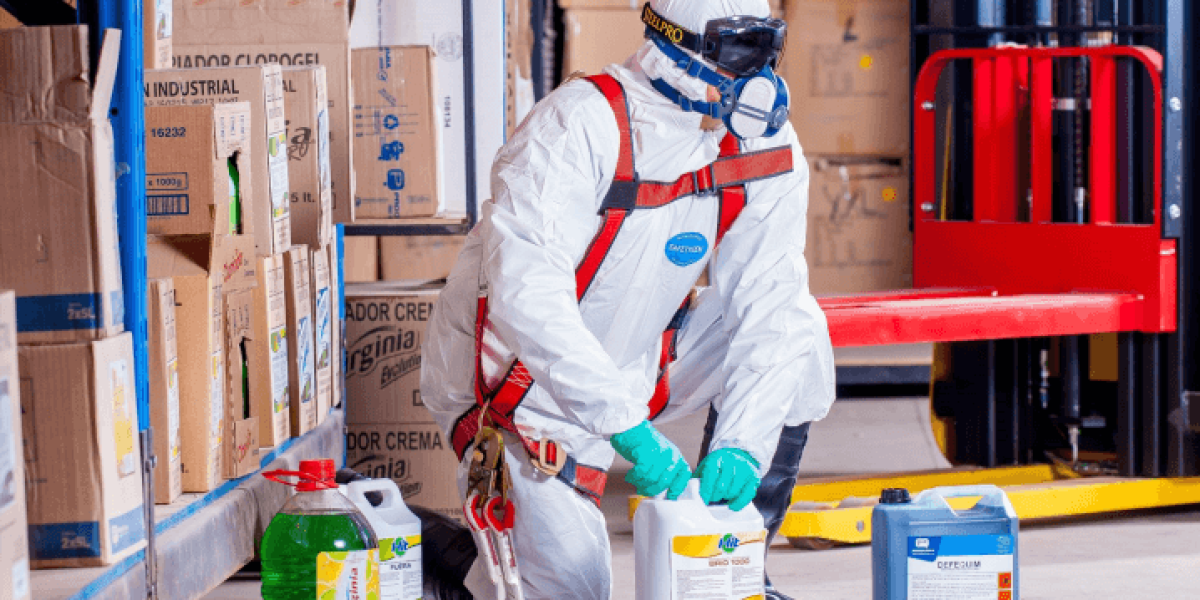Understanding health and safety measures in hazardous material handling can save lives. Handling hazardous materials is a critical aspect of various industries, from manufacturing to healthcare. While these substances play a crucial role in many processes, ensuring the safety of workers and the environment is paramount. In this comprehensive guide, we’ll delve into the essential health and safety measures required for the proper handling of hazardous materials and the importance of regular training to prioritise a safe working environment, mitigate risk and do your bit for environmental sustainability.
Risk Assessment
Before embarking on any hazardous material handling task, a thorough risk assessment is essential. This involves identifying potential hazards associated with the specific materials being handled. Factors such as toxicity, flammability, reactivity, and the physical state (liquid, gas, or solid) should be carefully evaluated. Understanding the risks is the first step toward implementing effective safety measures. Always check Section 10, 11 and 12 of the safety data sheet in detail of the product specific risks.
Training
Ensuring that personnel involved in handling hazardous materials are well-trained is a cornerstone of a robust safety program. Workers must be aware of the risks associated with the specific substances they are dealing with and equipped with the knowledge to respond appropriately in various scenarios. Regular training sessions should be conducted to keep workers updated on safety protocols and procedures, and always check Section 14 of the safety data sheet to identify if the product is classed as dangerous for transport. Speak to Logicom Hub about how we can help.
Personal Protective Equipment (PPE)
The use of appropriate personal protective equipment (PPE) is non-negotiable when handling hazardous materials. Depending on the nature of the materials, workers may need gloves, goggles, masks and protective clothing to safeguard themselves from potential exposure. PPE acts as a crucial barrier between the worker and the hazardous substance, reducing the risk of harm. Always check Section 8 of the safety data sheet in detail.
Storage
Proper storage of hazardous materials is paramount to preventing accidents and minimising risks. Designated storage areas with adequate ventilation should be established. Additionally, segregation is crucial to prevent incompatible substances from coming into contact with each other. Using secure containers labelled with the material’s name, hazard class, and other pertinent information helps maintain a safe working environment.
Handling Procedures
Safe handling procedures should be clearly defined and communicated to all personnel involved in the process. This includes guidelines for loading, unloading, and transferring hazardous materials. The use of equipment and tools specifically designed for handling such materials is essential to minimise the risk of spills, leaks, or other accidents. Always check Section 7 of the safety data sheet in detail for appropriate storage and handling requirements.
Emergency Response
No matter how diligent the precautions, accidents can still happen. Having a well-defined emergency response plan is critical. This plan should cover procedures for spills, leaks, fires, or any other accidents involving hazardous materials. Regular training on emergency response protocols and the availability of emergency equipment, such as fire extinguishers and spill kits, can make a significant difference in minimising the impact of unforeseen incidents. Always check Section 4, 5 and 6 of the safety data sheet in detail.
Communication
Effective communication is key to a safe working environment. Clear communication channels should be established among workers involved in hazardous material handling. Proper labelling of containers with hazard symbols and warnings ensures that everyone is aware of the potential risks associated with the materials being handled.
Regulatory Compliance
Staying informed about and complying with local, national, and international regulations is not just good practice but a legal obligation. Regulations regarding the handling, transportation, and disposal of hazardous materials are in place to protect both the workforce and the environment. Regular updates on regulatory changes should be integrated into safety training programmes.
Ventilation
Proper ventilation is crucial in areas where hazardous materials are handled. Adequate ventilation helps prevent the accumulation of vapours or fumes, reducing the risk of inhalation exposure for workers. Implementing ventilation systems that meet safety standards is an essential component of any hazardous material handling facility.
Waste Disposal
Developing a proper waste disposal plan for hazardous materials is as important as their proper handling. Compliance with regulations for recycling, treatment, or disposal of waste ensures that the environmental impact is minimised. Responsible waste management is not only a legal requirement but also a crucial part of corporate social responsibility. Always check Section 13 of the safety data sheet in detail and ensure that you are correctly disposing of the goods.
Monitoring
Regular monitoring of air quality and conducting inspections are proactive measures to identify and address potential issues before they escalate. Continuous monitoring helps ensure that the working environment remains within established safety parameters, providing an additional layer of protection for workers.
Conclusion
Handling hazardous materials demands a meticulous approach to health and safety. By incorporating these comprehensive measures into daily practices, organisations can create a secure working environment, protect their workforce, and contribute to environmental sustainability. Prioritising safety not only mitigates risks but also fosters a culture of responsibility and accountability within the workplace.
We are a leading provider in dangerous goods training courses (HAZMAT). Our aim is to provide interactive dangerous goods training that builds confidence in new skills and knowledge in all attendees. Call us to discuss your training needs on 0330 912 5041 or email us at [email protected].

